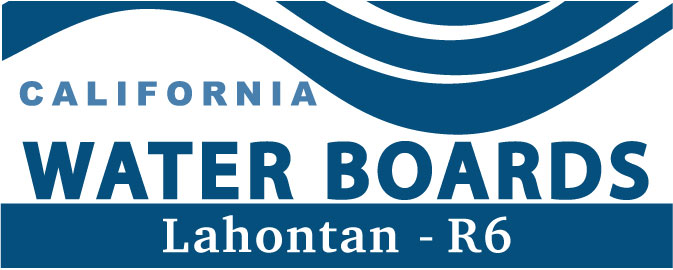Bridgeport Reservoir - Nutrients
H.U. 630.30
Bridgeport Reservoir is an impoundment of the East Walker River, has 2,914 acres of surface area, and has a holding capacity of 40,500 acre-feet. The primary use of the reservoir is for irrigation of agricultural/pastures lands downstream of the reservoir. Main tributaries to Bridgeport Reservoir include: East Walker River, Virginia Creek, Green Creek, Robinson Creek, Buckeye Creek, and Swauger Creek. A number of these creeks pass through the Bridgeport Valley where diversions occur for pasture irrigation. The amount of irrigated pasture within the valley is approximately 21,000 acres. Irrigation return flows re-enter the reservoir through tributary streams, tail water control ditches, and overland and subsurface flow. The East Walker River continues from the outlet of the dam and crosses the California/ Nevada state line approximately 12 miles downstream. The East Walker River joins with the West Walker River and ultimately discharges into Walker Lake in Nevada.
The goal of the nutrient TMDL is to determine sources of nutrient loading, establish numeric targets that are protective of beneficial uses, and establish load allocations that sustain mesotrophic (productive but not eutrophic) conditions consistent with beneficial uses. The beneficial uses designated for Bridgeport Reservoir and tributaries to the reservoir include:
- Municipal and Domestic Supply (MUN)
- Agricultural Supply (AGR)
- Ground Water Recharge (GWR)
- Navigation (NAV)
- Water Contact Recreation (REC-1)
- Non-Water Contact Recreation (REC-2)
- Commercial and Sport Fishing (COMM)
- Cold Freshwater Habitat (COLD)
- Wildlife Habitat (WILD)
- Spawning, Reproduction, and Development (SPWN)
Beneficial uses identified as impaired include MUN, REC-I, REC-2, COLD, and SPWN. Algae blooms and other nuisance conditions are occurring at Bridgeport Reservoir and appear to result from excessive nutrient loading. Nutrient sources may include internal loading from lake-bottom sediments, livestock waste, fertilizers, on-site septic system discharges, municipal sewage treatment plant discharges, solid waste disposal (landfills), and geothermal springs. Sediment and silt may also be a transport mechanism for nutrients and, sources may include in-stream bank erosion, livestock induced streambank or irrigation ditch erosion, road maintenance activities, forest fire impacts, recreational activities, and irrigation ditch maintenance. Algae blooms may produce toxic by-products directly or from decomposition, reduce dissolved oxygen (DO) concentrations in the water, and create nuisance odors.
Bridgeport Reservoir was listed in 1994 as impaired for nutrients, sediment, and siltation in accordance with Section 303(d) of the Clean Water Act (CWA). It first appeared on 303(d) list as a result of non-point source pollution related to watershed disturbance. The goal of the nutrient TMDL is to determine sources of nutrient loading, establish numeric targets that are protective of beneficial uses, and establish load allocations that sustain mesotrophic (productive but not eutrophic) conditions consistent with beneficial uses.



